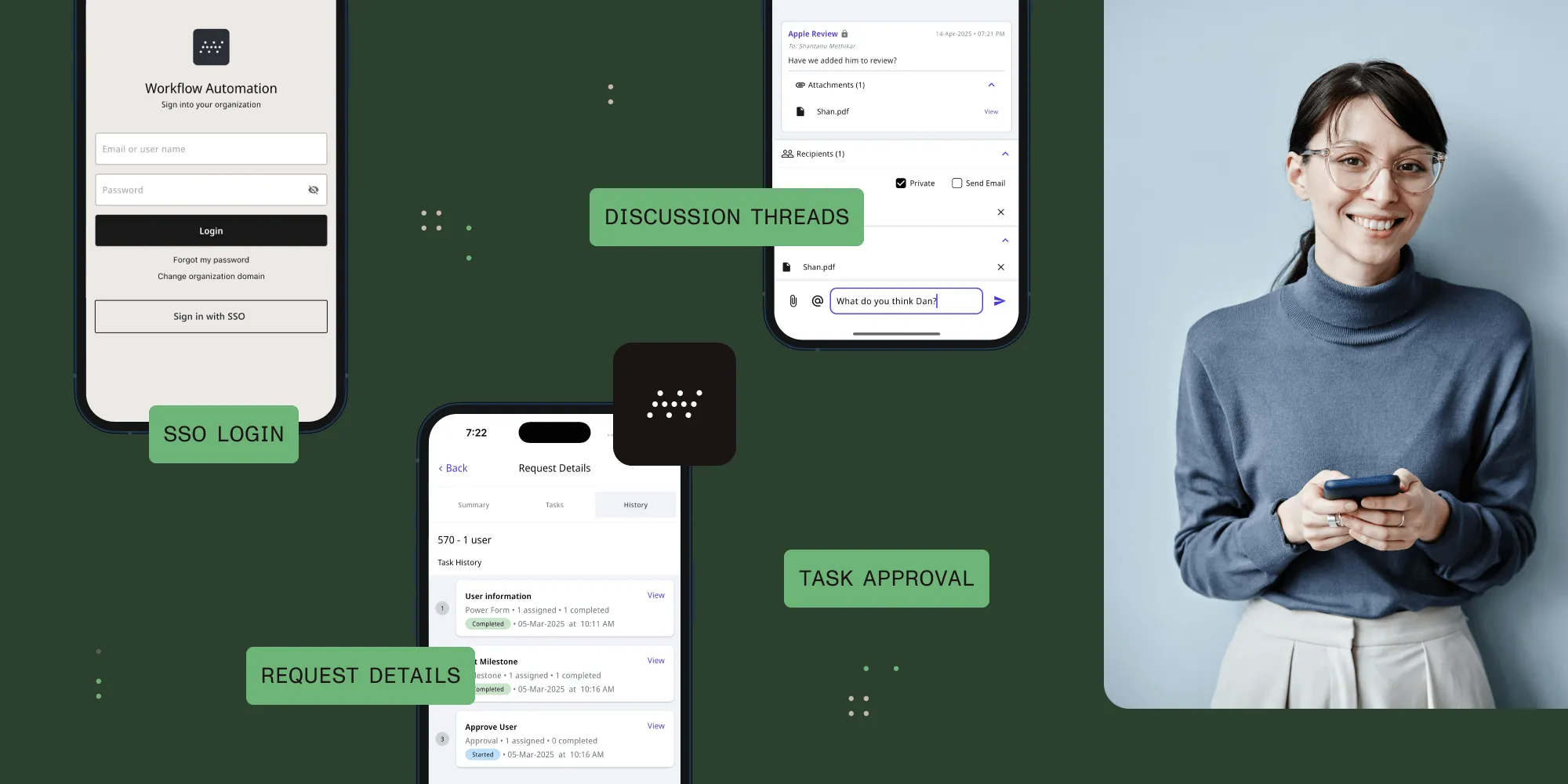Project Approval System
Table of contents

What is a Project Approval System?
Project approval systems use standardized, smart project intake forms, intelligent routing based on business rules, and create approval tasks for project stakeholders to validate projects that impact an organization financially and strategically. These systems can also include value-based approval criteria, calculate viability scores, provide audit trails, and more.
The Risk of Disorganized Project Approvals
Without the proper safeguards in place, potentially risky and/or expensive projects can cause lasting harm to an organization. Using emails, spreadsheets, paper forms, instant messaging, informal one-on-one meetings, etc. doesn't provide the proper guardrails and oversight necessary to ensure projects are properly vetted prior to kickoff.
Designing a project approval process, creating project plan templates, establishing project intake, developing project request forms, assigning a risk team, creating business rules (e.g. if the project is greater than $50k, escalate to VP), developing a project scorecard, laying out an approval matrix, and determining final approval steps are all critical for reducing project risk and ensuring the best possible outcomes within set deadlines.
Automate Your Project Approval Process
Managing project approvals with email, spreadsheets (even the latest online spreadsheet software), or software that's ill-equipped to handle project requests and approvals, scoring, and routing is inefficient and risky. Requests for projects can be improperly approved, fail to provide critical details, become lost, etc.
Automating the request process with workflow automation software has many benefits:
- Consistency of project request information
- Automated review and approval routing
- Reminders and alerts to ensure expedience
- Automated project/ROI scoring for approvers
- Complete audit trail of all requests and activity
- Project KPIs, reporting, and analytics
Establishing a Process for Project Approvals
How Do You Define a "Project?"
One key communication is how project management leaders and project team members will know if it's appropriate to submit something as a potential project. How does your organization define a project?
Example
- There is an executive champion.
- There are start and end dates for the effort.
- Unique effort. There are no similar efforts in the organization currently or planned.
- There are there specific, measurable deliverables/outputs.
- The effort will be managed by a specific, temporary project team.
Define the Approval Process
When a project is requested, what is the review and approval process? Here are some items to consider that might save time before drawing out the process (if necessary) using a process or flowchart illustration tool:
- What are the project approval levels (Manager/Director/Executive/CXO) and does the approval need to travel sequentially through each level?
- Will approvals be by single approvers or groups? In a group scenario, does it take just one individual in the group or multiple to approve?
- How should rejections be handled?
- What information does an approver need to see to make the best decision?
- Will there be thresholds for escalation? For instance "If the request is over $25,000, then route to..."
- How will alerts and reminders be configured to ensure momentum?
- How much of the process should be visible by the submitter? Should they, for instance, be able to see who's holding up on a request?
- Will requests route differently based on information supplied by the requester? (e.g. type of request, department, location, seniority, etc.)
Identify Project Information to Collect
You want to get as much information about the project upfront as possible in the project request form without overburdening the requester with unnecessary questions. Here are some examples of project details to gather at the outset:
- Budget
- Funding source
- Goals and Objectives
- Initial estimated cost
- Justification
- Proposed timeline
- Required resources
- Scope (overview of what's in, out, uncertain)
- Known risks and constraints
- Metrics and KPIs
- Project Sponsor
- Project name, description, and objectives
- Project owner
- Stakeholder roles, responsibilities, and involvement
- Supporting documentation
Define the Evaluation Formula/Scoring Process
When approvers are reviewing potential projects they need a methodology for making a decision. This will obviously be unique to the type of project and the organization but, generally, the methodology or formula should factor in the return on investment, payback period, strategic importance, competitive advantage, etc.
The accepted methodology should be part of the request process where either the requester or someone up the chain is assessing the project for these components, usually numerically. Often each component is assigned a rating and then the rating is totaled. Additionally, return and budget numbers are included as part of the analysis.
Approvers can now evaluate the request intelligently and either move the project forward, return the request for additional or corrected information, or simply reject it.
Project Request and Approval Portal
The project request portal is where users go to submit project requests and track existing requests. Managers also use the portal to manage their approval tasks and collaborate with users and other managers regarding specific projects. The portal also houses analytics information to check the performance of the approval process and identify bottlenecks, track against SLAs, look for trends, and see aggregate data on all projects.
Interested in Automating Your Project Approval Workflow?
We have a variety of resources to help you on your journey to an automated workflow.
- Workflow Tools and eBooks
- Workflow Ideas Weekly eMail Newsletter(opens in a new tab)
- Recorded Demonstration of our Workflow Automation Software
- Request a Live Demonstration







